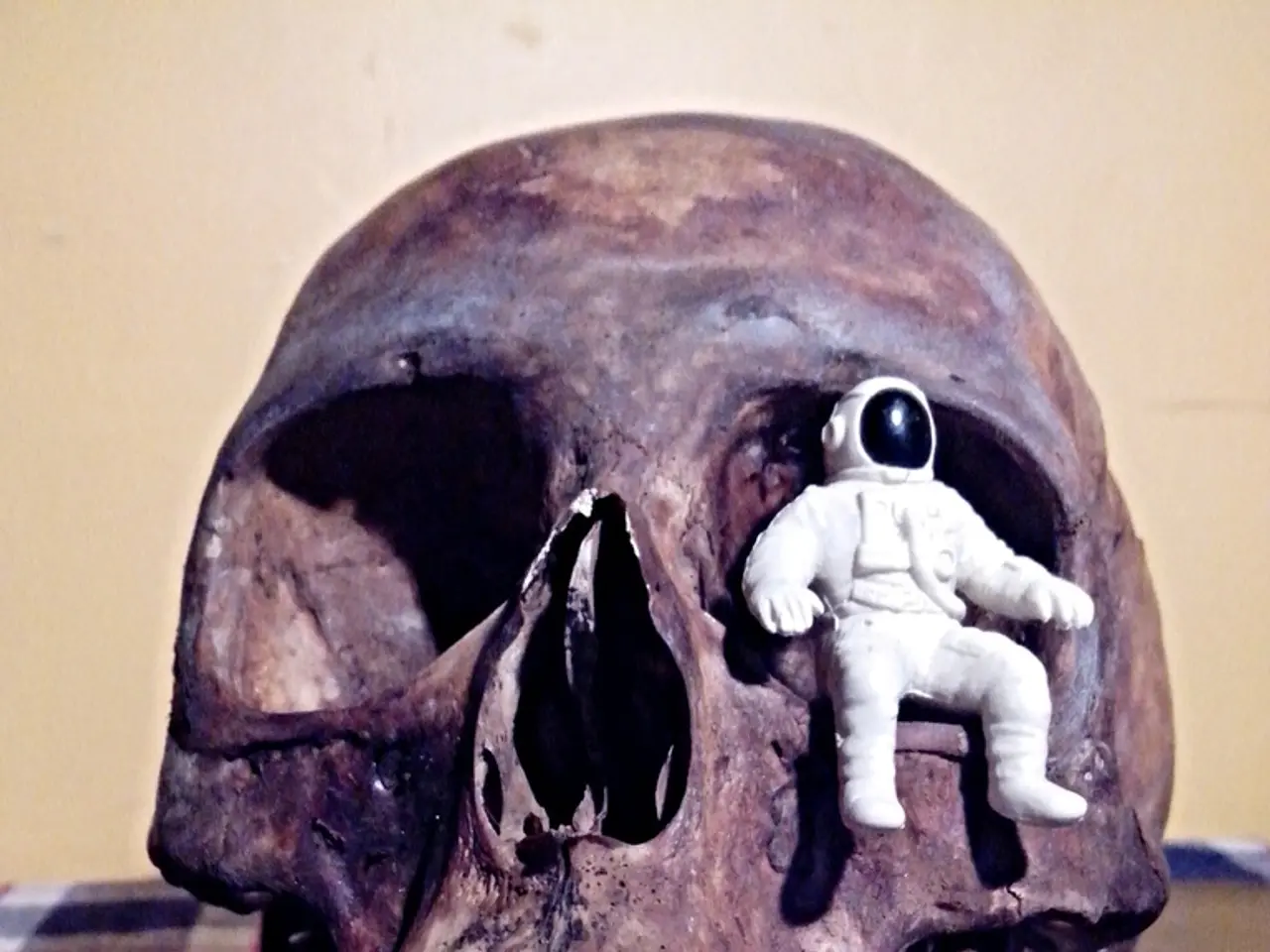Discovered Asteroid Debris Older Than Earth in a Man's Suburban Home
In the southeast United States, a rare event occurred in late June, as a celestial fireball was observed during daylight hours. The spectacle left behind a small, cherry tomato-sized meteorite that would later be named the McDonough Meteorite.
This space rock belongs to a group of asteroids in the main asteroid belt between Mars and Jupiter. Interestingly, these asteroids are older than Earth, with the breakup of the asteroid the McDonough Meteorite originated from happening approximately 470 million years ago.
The meteorite's journey to Earth was not an uncommon occurrence, as NASA estimates that 44,000 tonnes of meteor-matter reach our planet every day. However, most of this matter falls into the sea, and the majority that reaches the Earth's surface is dust or very small.
Remarkably, a significant portion of the McDonough Meteorite made it to the surface, and it was found in a resident's living room in Atlanta. The University of Georgia's Franklin College of Arts and Sciences, specifically Scott Harris from the department of geology, analysed the meteorite using optical and electron microscopy.
The name "McDonough Meteorite" reflects the location where the space rock landed. Harris and other scientists named the meteorite according to the Nomenclature Committee of the Meteoritical Society's convention.
The discovery of the McDonough Meteorite comes at a time when a 'golden age' in space-rock spotting arises due to advances in space-based sensors and ground observation networks. Since around 2018, the fidelity and quantity of data on fireball events have improved significantly, thanks to next-generation space sensors and ground networks like Australia's Desert Fireball Network.
This wealth of data, combined with improved analysis tools, enables better detection, trajectory mapping, and prediction of meteorite falls. As a result, we can now identify new meteor showers and streams with finer resolution, more reliably characterize Earth's impact risk, and even utilize meteor observation trails for scientific and technical applications.
Scott Harris, a researcher at the University of Georgia, believes we may be on the cusp of a golden age in space-rock spotting. He suggests that modern technology and an attentive public will help us recover more and more meteorites, making it possible to learn more about the universe and our place in it.
While large meteorite falls are still relatively rare, occurring roughly once every few decades to centuries for very large impacts, the advances in technology promise a more frequent discovery of these cosmic treasures. The McDonough Meteorite serves as a testament to the exciting possibilities that lie ahead in the study of space rocks.





